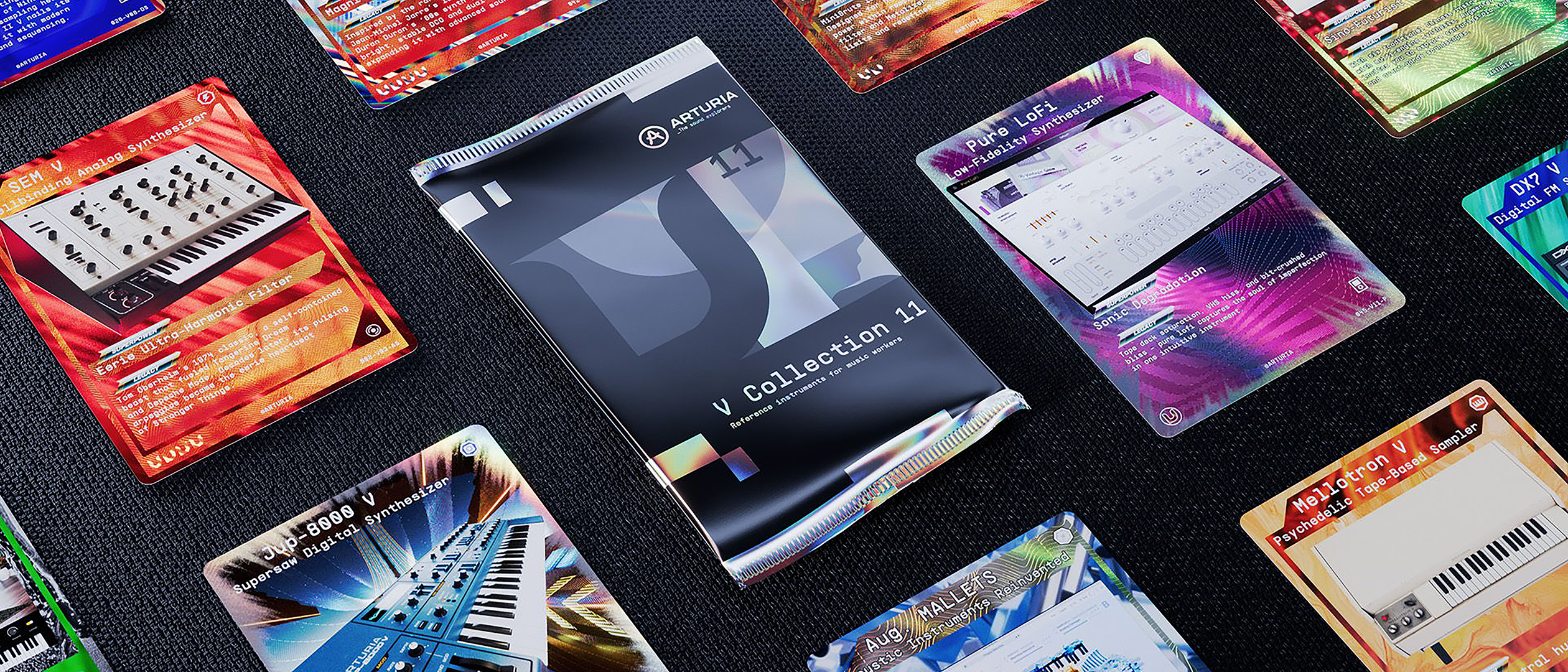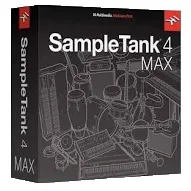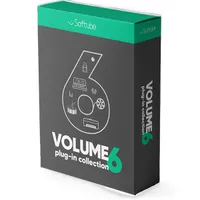MusicRadar Verdict
Just when you think V Collection had run out of steam, it enters a new decade, and delivers more modern twists and classics. This is still the synth and keyboard collection to beat.
Pros
- +
Jup-8000 is great for those of us ‘who were there’.
- +
Lofi is easy, deep, and dirty.
- +
More augmented instruments and updates for excellent sound design.
- +
Synthx and SEM deliver characterful synth options.
Cons
- -
Big outlay, although Intro is a cheaper option.
- -
Would be good to have a pick ‘n’ mix set.
- -
Upgrade price potentially steep.
MusicRadar's got your back
What is it?
Arturia’s V Collection updates come around as regularly as the positive reviews for them. These revisions to the company’s famed collection of emulations of keyboards gone by – and increasingly newer models – are usually packed with new plugins, presets, and sounds, plus new versions of existing titles. The updates inevitably score well, we end up using the words ‘as always’ too many times in the reviews, and this latest release is no different. But v11 has more surprises than you might expect, and if you are a fan of 1990s dance music, it’s got one of the machines you have been waiting for.
Over the last ten releases – and an incredible 20 years – V Collection has gone from just four emulations of vintage synths to well over 30 recreations of all sorts of classic keyboards. As the number of vintage instrument targets from the ’60s, ’70s, and ’80s have been ticked off the list in each update, the last couple of versions have seen Arturia ‘augment’ the collection with new acoustic Augmented instruments. While v11 has two more additions of these, and big updates to the existing five, a major new plugin addition points to another path for Arturia to tread: the 1990s! And as the famous sample from that decade goes, that’s a big ‘ah yeah’ from us.
OK, version 11 of V Collection is not a massive stride through that decade of dance – and, yes, most of those of the tunes from that time were produced by the 1980s classics already present in the collection – but you do get an emulation of a 1990s dance icon, the Roland JP-8000, and the inclusion of a non-emulation Pure LoFi synth, which could be seen to cover the filthier and trippier side of that decade and beyond.
1990s gear is an interesting potential new direction for V Collection as it could – copyright issues aside – see it wrap its emulation tentacles around some absolute belters from E-mu (samplers and sound modules), Clavia (the Nord range), Yamaha (SY range, CS1x), Roland (JV) and many more for future VC versions. However, the question for this 20th anniversary of V Collection today is, does version 11 reach synth heaven? And, yes, you probably already know the answer…
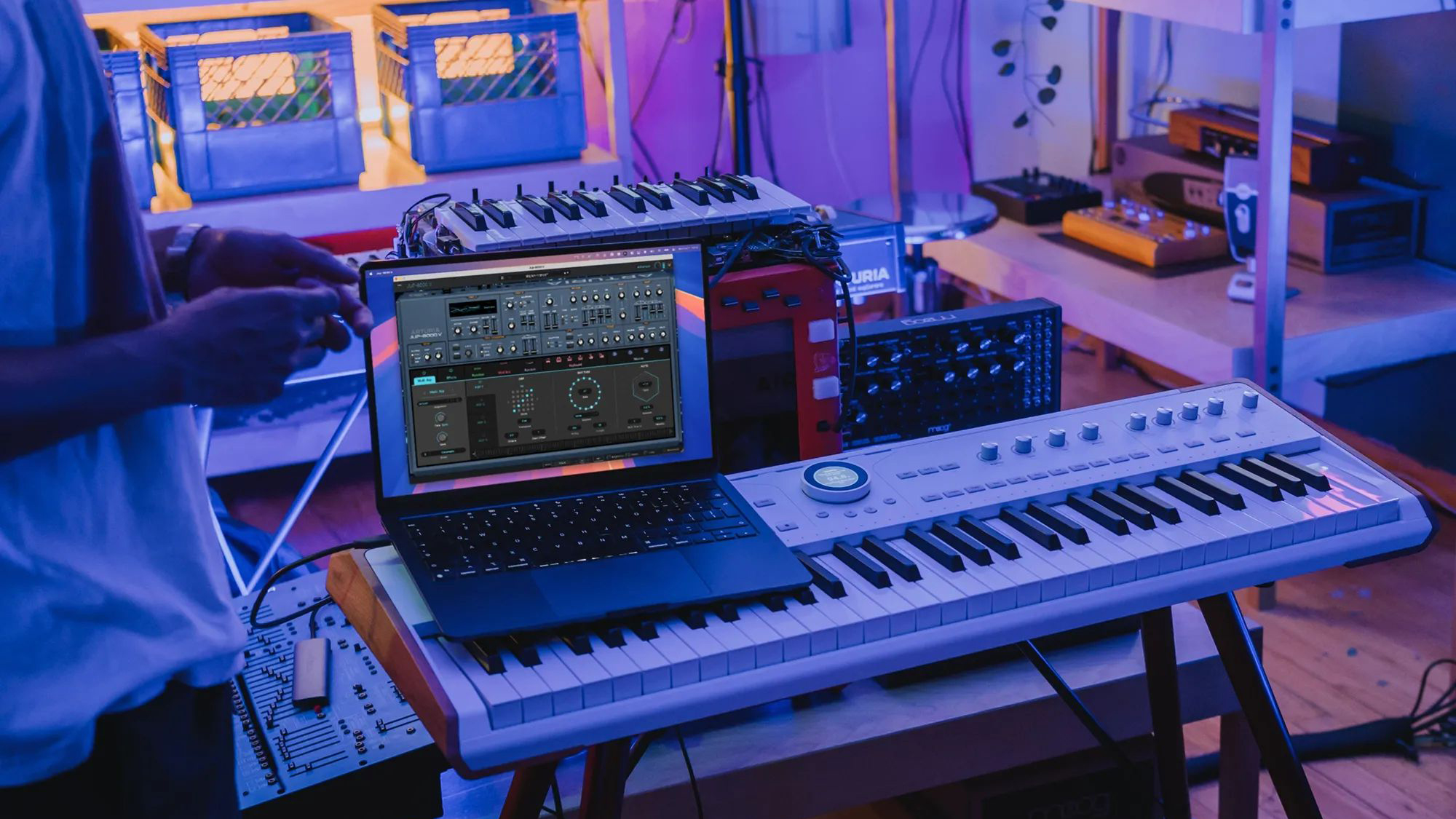
Overview
On top of the JP-8000 emulation (called Jup-8000V) and Pure Lofi additions, V Collection 11’s new additions also include Synthx V, a recreation of the 1981 Elka Synthex polysynth, and a remodelled SEM V, an emulation of the 1974 Oberheim SEM. Arturia has also recently added emulations of its own hardware synths to V Collection, so we now also get MiniBrute V, a polyphonic Brute (PolyBrute, anyone?), alongside the excellent MiniFreak plugin.
Final additions include two more Augmented instruments – Yangtze and Mallets – and while these will no doubt add some traditional and contemporary spins on Chinese and percussive sounds, it’s most definitely Jup-8000V and Pure Lofi that we’re downloading first via Arturia’s slick Software Center.
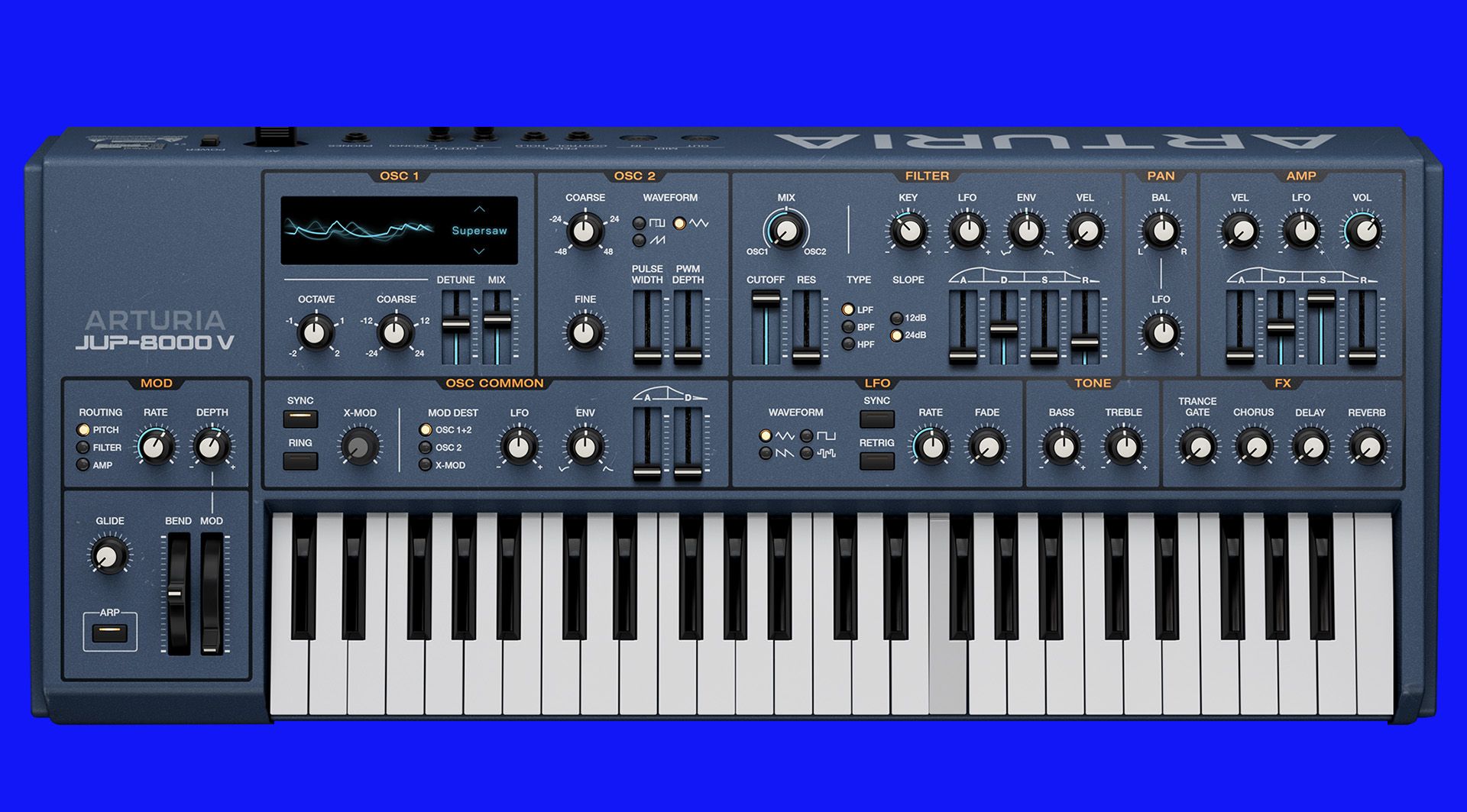
Performance
We’ll start with Jup-8000 – we’re too excited not to – and the original machine scored big time back in the ’90s for a couple of reasons. The first was the re-introduction of hands-on controls so lacking in a lot of digital synths of the time, and the second was the machine’s sound which was a genuine reflection of what was ‘happening’ at the time, with its supersaw character in particular laying the groundwork for dance music well into the next century.
Want all the hottest music and gear news, reviews, deals, features and more, direct to your inbox? Sign up here.
This was a surprise as very often the big guns of synthesis would try to be cool and pack their machines with what they envisaged to be the ‘in thing’, and more often than not, they would fail miserably, rather like your dad dancing to the latest chart smash at a wedding. Not so with the JP-8000 and this version: there’s everything from lush and atmospheric pads and strings, plus those very super saws, to bendy and squealing bass, frantic arps and stabby pianos. Everything you need to don those gloves and bend those glowsticks – if there is ever yet another ’90s revival, then this will be your go-to plugin.
Our hardware JP died just before this review, so not only are we over-the-moon happy with this software replacement, but we can confidently report that its spirit easily lives on here. There may be some producers under 25 who find just a few of the sounds a little too twee and retro, but there are many contemporary inclusions, and the effects and modulation extras under the Advanced tab can easily drag Jup-8000’s sound 30 years into the future.
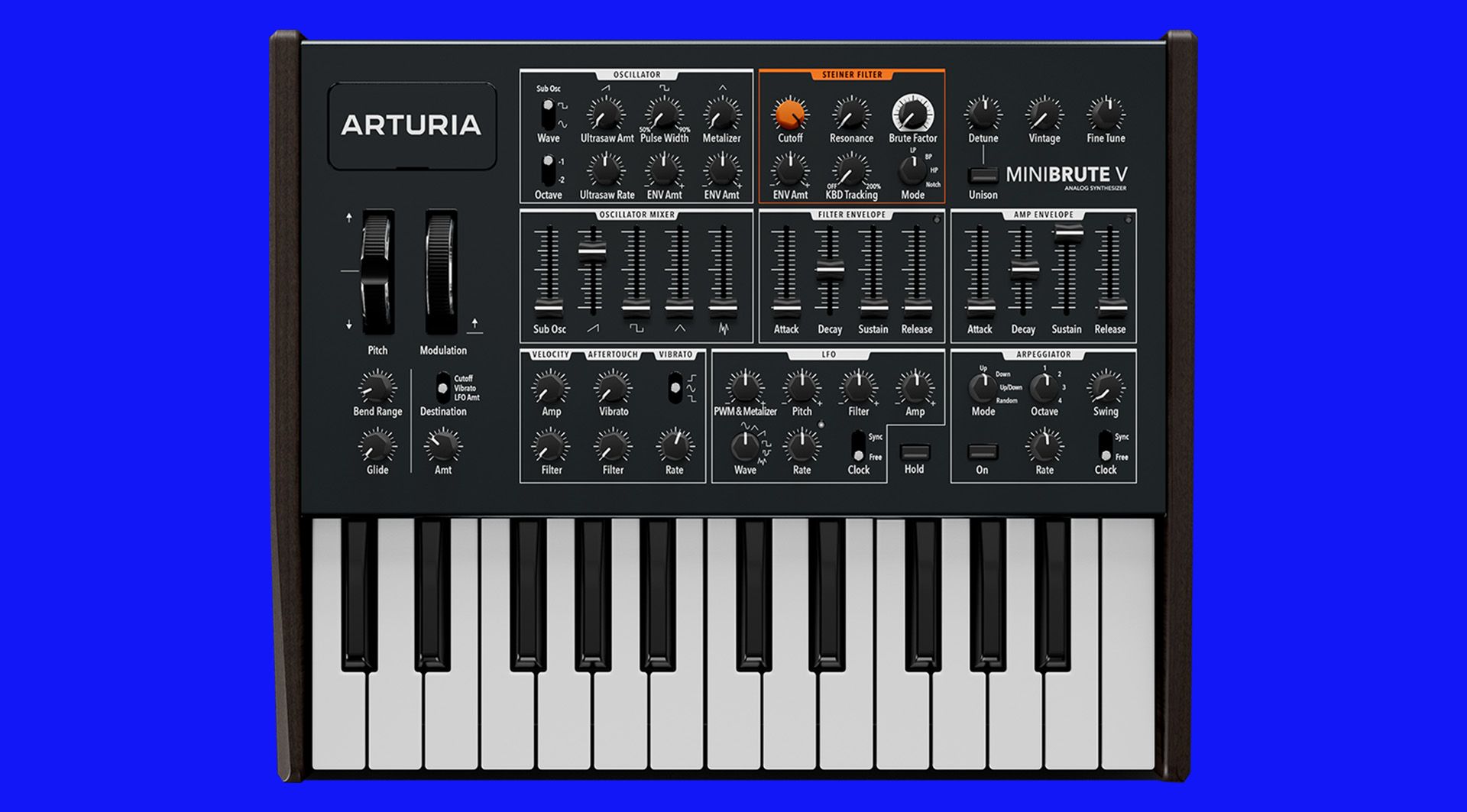
As expected, we’ve spent way too much on one headline act, so we’d better quickly run through some other VC11 extras. We reviewed MiniBrute V, and it’s a gnarly and polyphonic version of Arturia’s original analogue hardware mono. Add in effects and you can get a very different feel from the original, but it’s a very characterful synth overall.
The two extra Augmented titles didn’t exactly fill us with high expectations – mallets and Chinese instruments aren’t usually our first-choice instruments – but we know from previous VC iterations that you ignore these titles at your peril. Each has a dual-layer setup, with each layer made from two synth or sampler parts selected from drop-down menus. You then get filter and envelope sections plus plenty of effects per layer and for the overall mix, and with modulation and arpeggiator options, you can quickly change the fundamental sound ingredients and dramatically create something off-the-wall, evolving or ambient.
The Play page on each – showing some key controls and a big Morph dial – delivers some of the more dramatic options to you in an even easier way. Don’t be fooled by the instrument subject in their titles, as the emphasis is most definitely on the word ‘Augmented’.
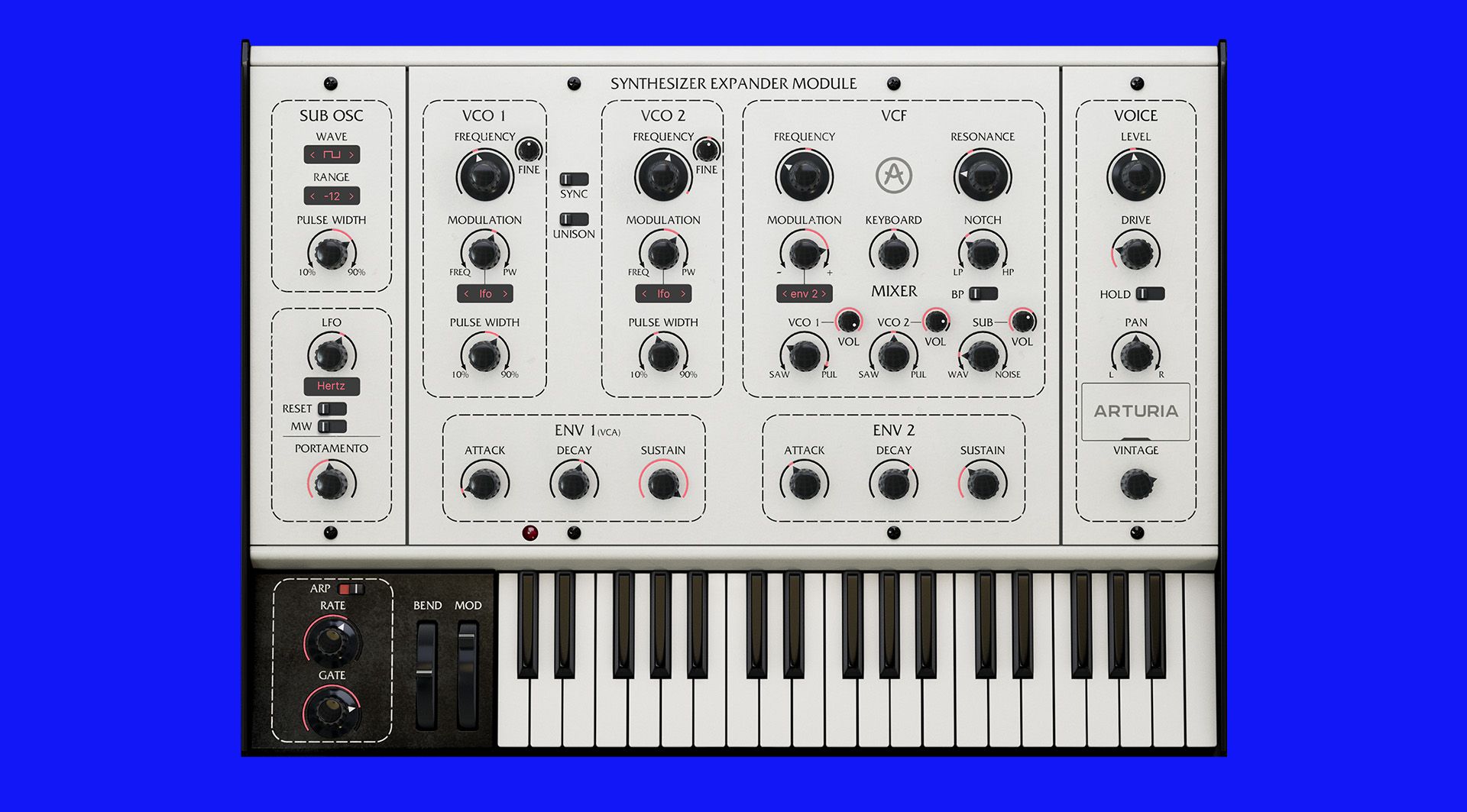
SEM V is Arturia’s v3 update to the American classic analogue, first released in hardware back in 1974 and first released by Arturia as v1 software in 2012. This latest version has been, as they say, “rewritten from the ground up”. What this means in practice is an improved sound engine with continuously running oscillators and a reworked filter.
The sound is as lush and analogue as ever, helped by that big (for Oberheim) 8-voice polyphony. It’s basically everything analogue, with a surprisingly up-to-date-feel on occasion. Many of the presets feature a good amount of wonk and wobble – two words you might not always associate with Oberheim.
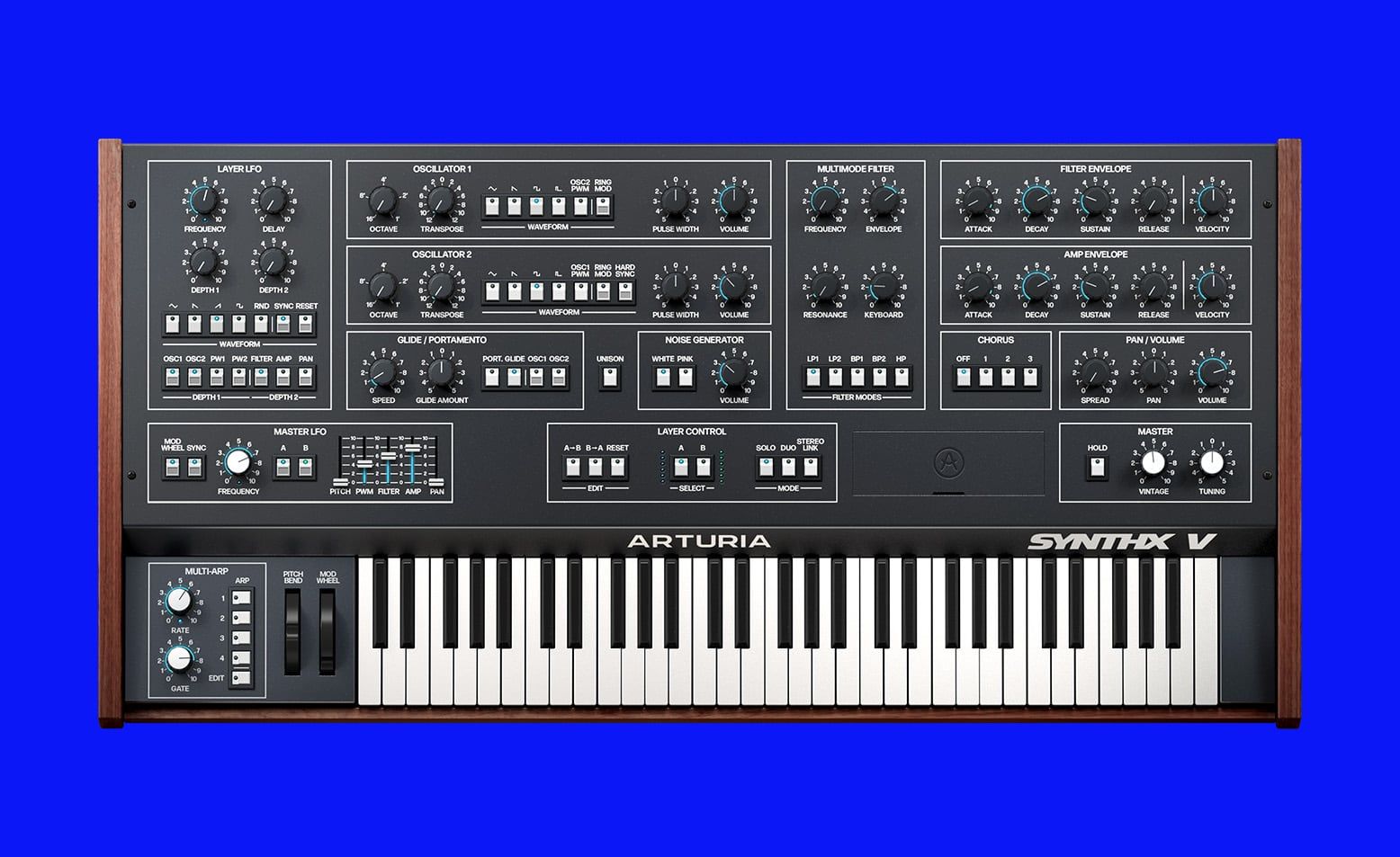
Synthx V is another newbie from Arturia, first announced last year and an emulation of the Elka Synthex polysynth. It features the two multi-waveform DCOs, multimode filter and modulation options of the original, plus, of course, Arturia extras including more effect, arp and modulation features.
The original Synthx was renowned for its slightly off-the-wall sound compared to standard analogue, and that is present and correct here, with an off-beat and slightly crunchy direction taken with some of the presets, while others give you a very 2020s sound while showing off Arturia’s extras. It makes for a different option to use over the many other analogue synths included in VC, so is a welcome addition.
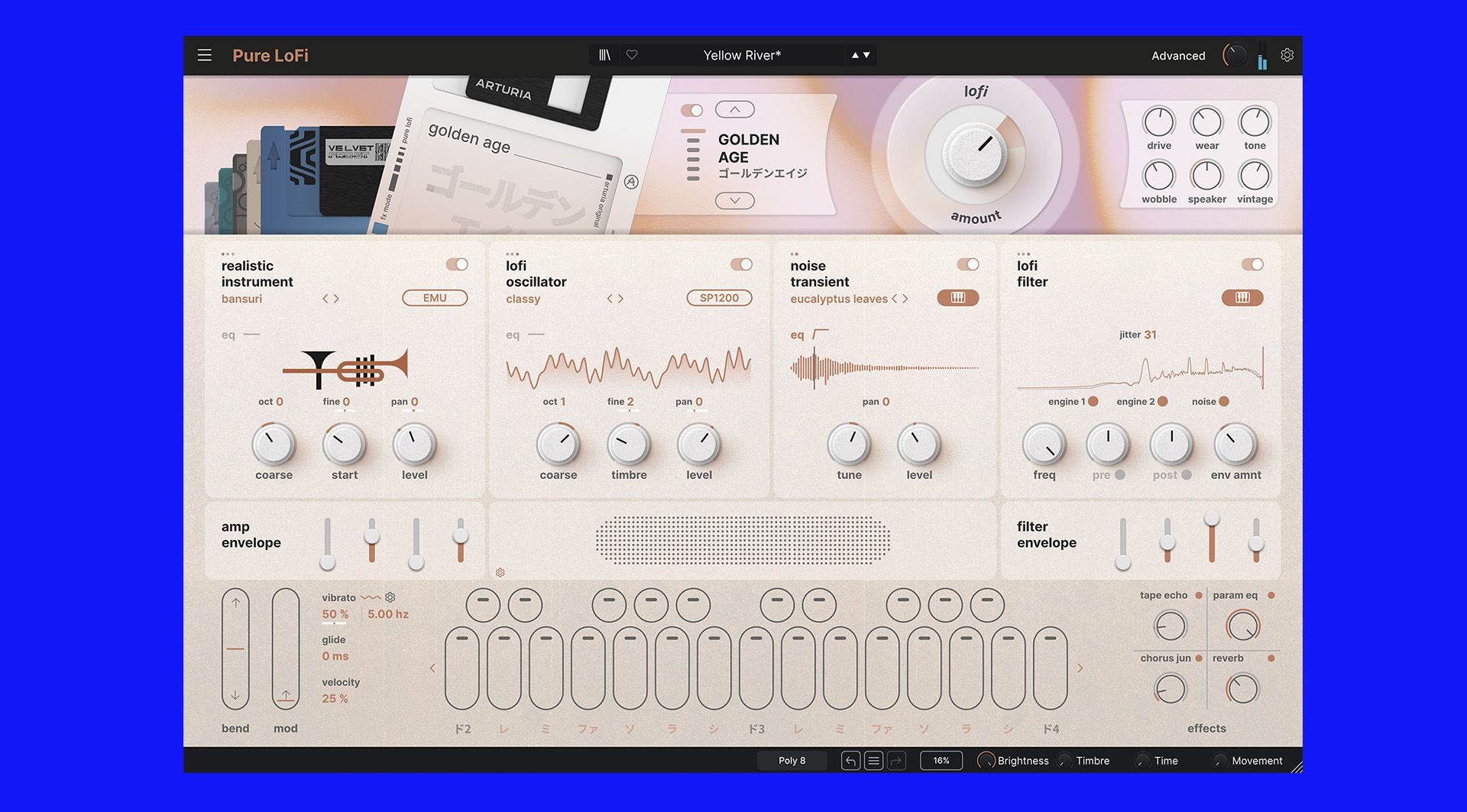
That leaves Pure Lofi, another big VC11 highlight. Adding a lower fidelity feel to overproduced computer music has, of course, become big business – where once we tried to hide noise and distortion, we now welcome them into our over-polished world. Pure Lofi takes this ethos and runs as far as you like with it, and in as simple a way as possible.
You start with a pair of sources where you can blend instrument sounds, samples and synth waveforms, and then put them through hardware emulations based on old samplers and synths, or through Arturia’s less subtle distortion. You can then add noise from tape, percussion, nature and more before going through both a filter and envelope stage.
Finally, add in a ‘unique’ lo-fi processor for disc-swapping, tape-inspired mayhem – and a big knob to crank it up – and then up to four effect slots, and what often start as ‘too polite’ presets can be filthed up in a much easier way than perhaps our description implies. A final touch is a similar effects and modulation setup to Jup-8000 opened by an Advanced tab. All told, you’ll wonder why Arturia hasn’t made a similar effects plugin to use on your own sounds, as it’s so simple and effective.
Verdict
As ever, just when you think that V-Collection has run its course, Arturia pulls out all the stops and assembles a compelling update. To us, Lofi and Jup-8000 are its highlights – which might be an age thing, to be honest – but there is plenty more to appeal to many producers. It’s pricey, yes, but also, as ever, we must add that the considerable outlay of €699 can be balanced against the sheer number of instruments, now some 45, making it €$15 a plug.
Just when you think that V-Collection has run its course, Arturia pulls out all the stops and assembles a compelling update.
Another ‘as ever’ comes with the nagging feeling that you’ll have some of these instruments already, albeit possibly made by other developers or included in your DAW. To temper this, Arturia now has a cut-down Intro version available. €$199 gets you ten great titles, including Prophet 5 V, DX7 V, and MiniFreak – a great spread of instruments all told. However, we’d love the option – possibly a logistical nightmare – of choosing 10 instruments for the same money, or handpicking other custom and smaller collections. Yes, we can only ask.
The upgrade price for existing users is a little unclear, but we’re seeing prices of between €$99 and €$199, and the latter could be seen as pricey. Otherwise, V-Collection 11 is a triumph. We’d close with another well-trodden line – that we expect the French developers to struggle to produce such a worthy update next time around – but by now we’re starting to realise this probably won’t be the case. VC 11 is a surprisingly rich and varied update to a now classic collection of vintage and modern instruments.
Hands-on demos
Arturia
Alternatives
A wider remit and potentially larger price tag, but Komplete really does cover everything, everywhere, all at once, and works out at a tenner a title.
Read the full Native Instruments Komplete 15 review
With 28 libraries, over 30 synths, and an orchestra included, ST 4 Max is perhaps the most cost-effective, yet under-the-radar, multi-instrument collection out there.
Read the full IK Multimedia SampleTank 4 Max review
Another not-so-well-known collection, and the emphasis with Volume 6 is definitely on effects, but more classic synths are creeping in.
Read more about Softube Volume 6
Specifications
Price | Intro: €/$199 |
Type | Keyboard/instrument collection |
Key features | Number of instruments: 17 analogue synths/vocoder, 9 digital synths/sampler, 5 keyboards/organ, 5 acoustic/electric pianos; 7 Augmented instruments, plus Analog Lab Pro V and Pure Lofi |
System requirements | macOS 11+, Windows 10+, 4-core CPU, 3.4 GHz (4.0 GHz turbo-boost) or M1 CPU, 50GB hard disk space Runs 64-bit standalone or in VST, AU, and AAX hosts |
Contact |
Andy has been writing about music production and technology for 30 years having started out on Music Technology magazine back in 1992. He has edited the magazines Future Music, Keyboard Review, MusicTech and Computer Music, which he helped launch back in 1998. He owns way too many synthesizers.
You must confirm your public display name before commenting
Please logout and then login again, you will then be prompted to enter your display name.
